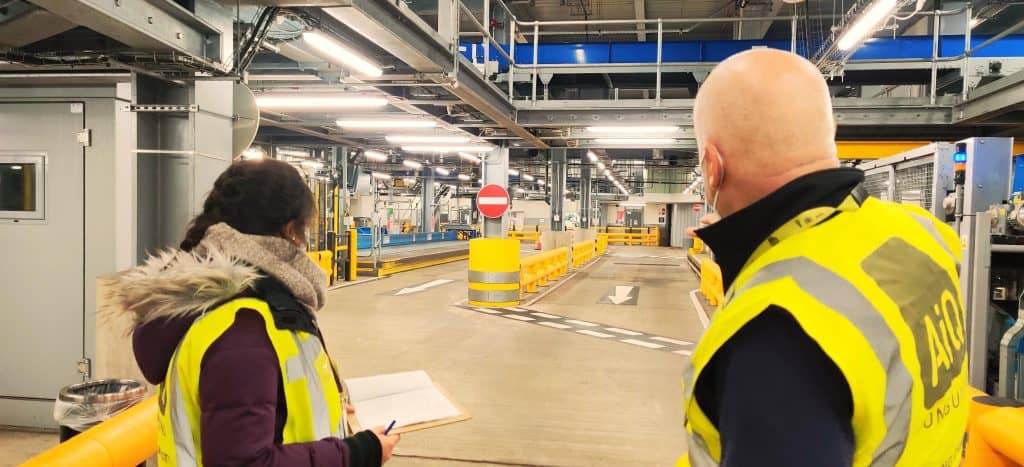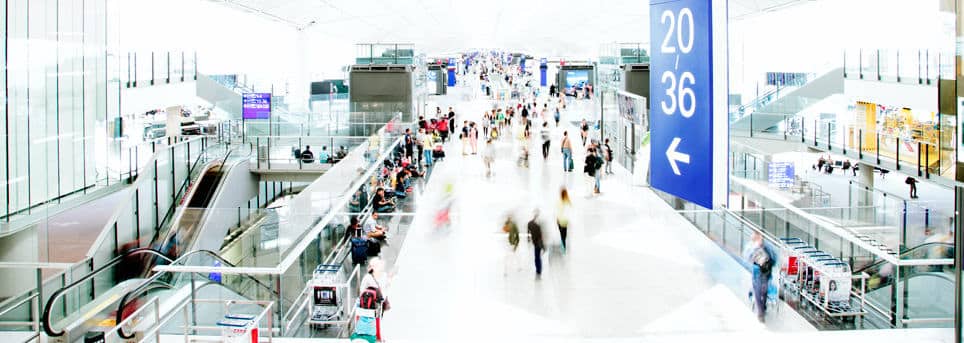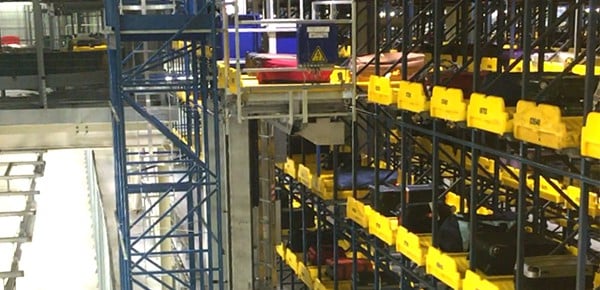 Airport’s recovery is now finally underway and AiQ are fortunate to be supporting several UK and International airports. From everyday operational requirements to strategic planning projects, this summer our team are helping airports on the path to a successful recovery. Read More »
Airport’s recovery is now finally underway and AiQ are fortunate to be supporting several UK and International airports. From everyday operational requirements to strategic planning projects, this summer our team are helping airports on the path to a successful recovery. Read More »

Topic: Hub Airport
How does AiQ Consulting work with architects and airports throughout the RIBA Plan of Work?
 Our experienced team of consultants, engineers, physicists and mathematicians work with architects throughout the many stages of conception, masterplanning, planning, design, construction and day-to-day operations when it comes to designing for airports.
Our experienced team of consultants, engineers, physicists and mathematicians work with architects throughout the many stages of conception, masterplanning, planning, design, construction and day-to-day operations when it comes to designing for airports.
Known as the RIBA Plan of Work, it’s the standard structure in which a project goes from client briefing and inception through to when the building is in use and the feedback stage. We employ different techniques at different times in order to work with architects, airports and contractors successfully, and have done so for many airports worldwide. Read More »
AiQ Airport Consultancy – The iQ behind airports

Capacity assessments, demand forecasting and future-proofing constrained and saturated airports are the core of our business. Our unique, diverse, multi-disciplinary airport consultancy team work in partnership with airport owners, operators and investors; airlines, architects and service professionals to provide a scientific approach to innovating future airports.
We are global experts, the iQ behind airports, creating capacity and operational efficiency, solving complex problems, future-proofing and aiding investment decision making. Our intelligent team and our breadth of experience make us who we are. Read More »
AiQ Consulting Signs Three-Year Framework Agreement with Heathrow Airport

AiQ Consulting has recently signed a three-year framework agreement with HAL for the annual maintenance of Airside Traffic Simulations, Ground Service Equipment (GSE) & Unit Load Device (ULD) models for Airside Operations at Heathrow Airport.
As part of this framework we will maintain an airport process, demand and capacity model with a reportable database and 2D visual vehicle simulation of all Airside Passenger Terminal & Cargo areas of Heathrow. Read More »
When small changes can make a big difference to your airport

When it comes to releasing capacity and improving passenger flow in your airport, smaller changes can often make a huge impact on your operational effectiveness and revenue.
AiQ helps constrained and saturated airports worldwide face challenges through smart solutions and holistic approaches. Minor changes in technology, check-in and automation can make a big difference at peak hour to security and emigration.
Building your way out of a problem is not always the solution. Your airport needs to be smarter.
Sweating your Airport Assets Read More »
How can you find capacity in constrained and saturated airports?

Adrian Todd, our CEO, explores how the team at AiQ Consulting uses technology, simulations and thinking holistically to create smart airports and realise capacity worldwide.
Airports become constrained in one or two or all three areas – runway, stands and terminal – because the nature of the industry is to expand to use every available space. Even if you solve your capacity problems today, in a few years you will find yourself in a similar position. So how can you find, and keep finding, capacity in your airport?
How does AiQ Consulting create capacity in constrained and saturated airports? Read More »
What are constrained and saturated airports, and how can you increase airport capacity?

Constrained and saturated airports are becoming increasingly common. Rising demand for air travel, larger aircraft, as well as restrictions for airport building and a lack of available space can create complex airport capacity challenges.
Adrian Todd, CEO of AiQ Consulting explains the challenges facing constrained and saturated airports worldwide and how AiQ helps airports realise their capacity. Read More »
Effective Asset Replacement for Airports

Asset replacement is an essential and continuous task for airports to remain secure and efficient. Hold Baggage Screening (HBS) replacement has been driven by new security standards with ECAC Standard 3 requiring much of the existing screening equipment to be replaced. An increase in demand for Early Bags Storage (EBS) may force the requirement to upgrade for increased efficiency and capacity. Whilst adopting new technologies for check-in and baggage systems have created the need to replace older equipment and updated processes. Read More »
CUTE and CUSS – How does Common Use Equipment Give Airport Operators More Flexibility?

CUTE (Common Use Terminal Equipment) and CUSS (Common Use Self Service) are priorities for the aviation industry, as airlines and airports invest in sharing assets that create more efficiencies for passengers and operators alike. What exactly are CUTE and CUSS, and how can they create efficiencies?
What are CUTE and CUSS? Read More »
Meet the Simulation Team – Ian MacKinnon

Ian MacKinnon, Technical Director, was part of the founding team of AiQ Consulting, using his unique skills of project management, computer aided design and data analysis, as well as his game design background, to create TransvisionAiR™ our bespoke modeling tool. In this Meet the Team blog we find out more about what projects he’s found challenging, his background and what the future holds for the company.
What was your background before joining AiQ? Read More »
Passenger Experience – Why is it Important for Airports?
 With record-breaking passenger numbers moving through airports and high expectations from today’s passengers, their journey experience is a very important development area for AiQ Consulting’s work with airports throughout the world.
With record-breaking passenger numbers moving through airports and high expectations from today’s passengers, their journey experience is a very important development area for AiQ Consulting’s work with airports throughout the world.
As global experts in constrained and saturated airports, we place immense focus on passenger experience in airports. When we approach operational efficiency and capacity planning, we do so with not only a scientific approach to big data and innovation, but also a strong emphasis on the passenger journey.
IATA Standards
Our approach to Big Data and what it means for your airport

AiQ finds the most effective methodology to solve problems in the quick-moving and reactive Aviation industry, particularly around Operations, Resilience, Future Demand and Capacity. We model or simulate at the level of detail that Big Data can support, and aim to provide appropriate analysis and forecasts based on realistic assumptions and processes.
Our method
